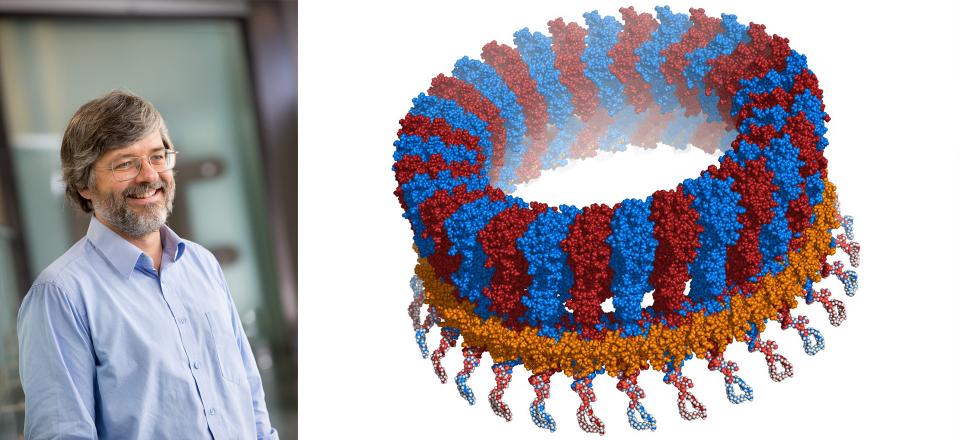Media Release: A step closer to treating common female infection

4 August 2016
Researchers at St Vincent’s Institute of Medical Research (SVI) in Melbourne in collaboration with scientists at the Bio21 Institute and the Victorian Life Sciences Computation Initiative of the University of Melbourne, the New York School of Medicine and the University of Oklahoma in the USA, have shown how the bacteria Gardnerella vaginalis targets cells and causes infection in women.
Gardnerella vaginalis is the bacteria primarily responsible for bacterial vaginosis (BV), the most common vaginal infection worldwide. About 21 million women under the age of 49 suffer from an outbreak of BV at least once per year.[1] One of the bacteria’s tools for establishing infection is a protein toxin, vaginolysin.
Using advanced X-ray techniques at the Australian Synchrotron, a giant X-ray microscope at Clayton in Melbourne’s southeast, SVI researchers were able to track the journey from toxin to infection.
“The research found that the toxin vaginolysin—which unlike many other common toxins only targets human tissues—is attracted to cells that have the receptor protein CD59 on their surface. The normal role of CD59 is to ‘turn down’ the body’s immune system so that it doesn’t attack cells that don’t pose a threat. Vaginolysin has hijacked this activity, allowing the bacteria to use this protective mechanism to single out human cells,” said co-lead author Dr Craig Morton.
“Once vaginolysin starts aggregating on CD59, it forms rings and punches holes in the cell membrane. This allows the cell’s essential nutrients to leak out. The bacteria then feed off of the nutrients, and infect the epithelial layers, causing bacterial vaginosis.”
Co-lead author and team head Professor Michael Parker says, “We consider this to be a significant discovery, because it provides us with not one, but three areas of potential research that could have far-reaching impact in human health. For example, identifying how the toxin works may lead to the development of a vaccine to prevent the infection.
“This research also has the potential to help us develop therapeutic approaches to “control” how the toxin works, and cause the Gardnerella bacteria to become less virulent. By blocking the toxin the bacteria would still be there, but unable to cause significant disease.
“While antibiotics can solve one problem they potentially create another—in the form of superbugs—so it’s important that we have other ways to develop treatments for such a common infection that causes women across the globe discomfort and distress. That’s why exploring the development of a vaccine is so appealing.
“Another exciting way we can use this knowledge is to attempt to ‘engineer’ this toxin, so that it becomes specific for markers other than CD59 such as those found on tumours, and could potentially be used to destroy the cancer cells.”
The work was published today in the journal Structure.
[1] http://healthresearchfunding.org/20-incredible-bacterial-vaginosis-stati...
Photo caption:
Image of a skin pore: Vaginolysin is alternating in blue and red. The immune receptor (CD59) is shown in orange.
Attached video description:
Vaginolysin (orange and dark blue) attacking a cell membrane. The toxin can recognise the correct target cell by binding to a protein of the immune system shown in grey. The membrane that surrounds the cell is shown as a light blue stripe. After binding to the cell membrane the toxin molecules assemble into a giant ring that punches a hole in the cell allowing essential nutrients to escape which the bacteria feeds on. Video courtesy of Dr Mike Kuiper, Victorian Life Sciences Computation Initiative (VLSCI), University of Melbourne.

